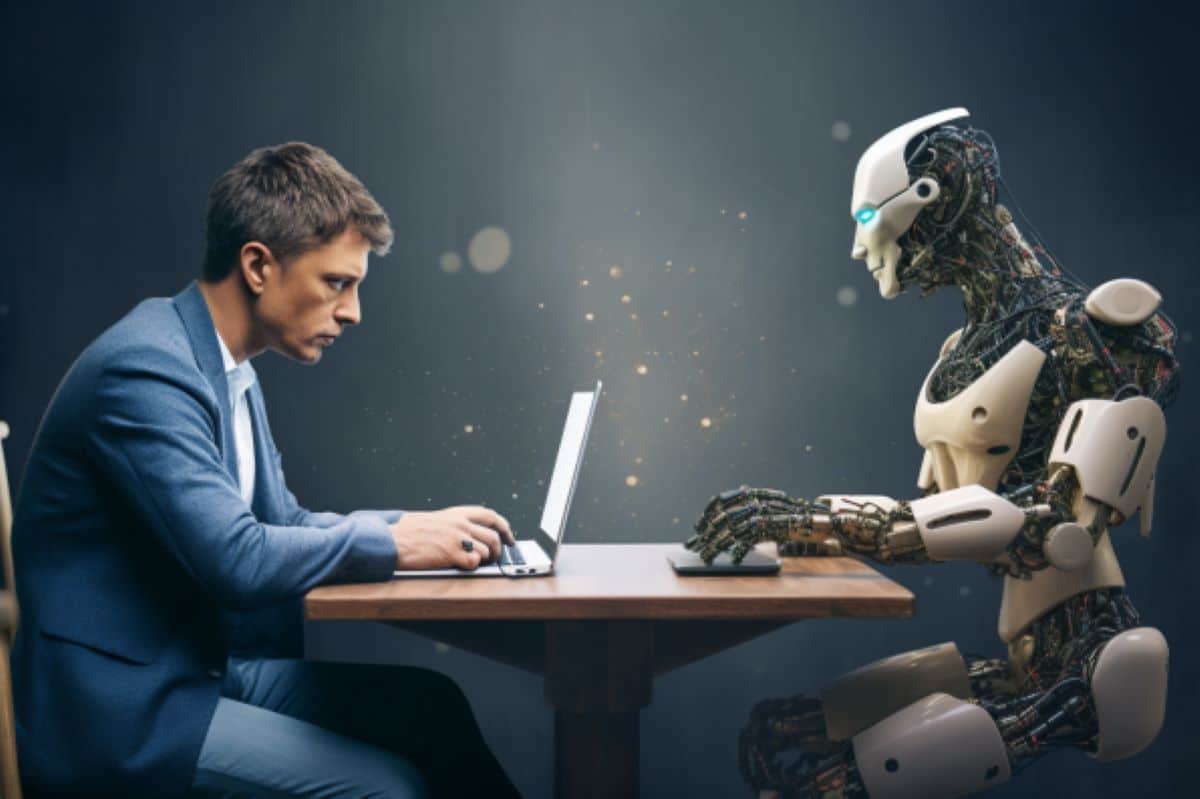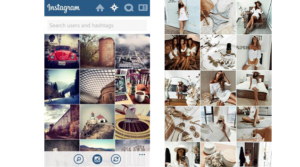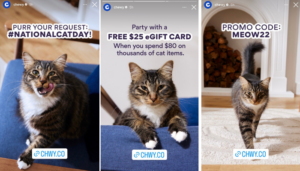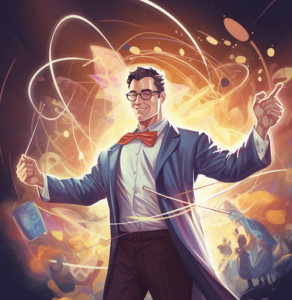As the seasons change, it’s the perfect time to breathe new life into your social media strategy. With platforms like LinkedIn, Instagram, TikTok, and Reddit constantly evolving, staying ahead means adapting and refreshing your approach. In this comprehensive guide, we’ll explore 15 dynamic ways to revitalize your social media presence across these diverse platforms. From tailoring your profile for each audience to embracing the latest trends and features, let’s dive into how you can embrace the spirit of renewal and rejuvenate your online presence this spring.
- Tailor Your Profile for Each Platform
Customize your profile on LinkedIn, Instagram, TikTok, and Reddit to resonate with the unique audience and features of each platform. From professional snapshots on LinkedIn to visually captivating content on Instagram, ensure consistency while adapting your narrative to suit the platform’s tone and audience expectations. - Cross-Platform Consistency
Maintain a consistent brand identity across all platforms while adapting to their respective nuances. Harmonize visual aesthetics, tone, and messaging to foster recognition and trust among your diverse audience base. Seamlessly integrate your contact information across platforms for streamlined communication and accessibility. - Revitalize Your LinkedIn Showcase Pages
Take advantage of LinkedIn Showcase Pages to spotlight specific aspects of your business or offerings. Refresh these pages with engaging content, including product updates, industry insights, and thought leadership articles. By curating compelling content, you enhance brand visibility and attract targeted audiences within the professional realm. - Elevate Your Instagram Stories
Make a statement with vibrant and dynamic Instagram Stories that captivate your audience’s attention. Utilize features like polls, quizzes, and countdowns to encourage interaction and feedback. Showcase behind-the-scenes glimpses, product demonstrations, or user-generated content to foster authenticity and engagement. - TikTok Trends and Challenges
Stay abreast of trending topics and challenges on TikTok to capitalize on viral content opportunities. Experiment with creative storytelling formats, catchy music, and engaging visual effects to resonate with the platform’s youthful audience. Embrace authenticity and humor to forge authentic connections and drive engagement. - Engage with Reddit Communities
Immerse yourself in relevant Reddit communities (subreddits) to foster meaningful discussions and connections. Participate in AMAs (Ask Me Anything), share valuable insights, and respond to inquiries to establish credibility and rapport within the community. Avoid overt self-promotion and prioritize adding value to the conversation. - Combat Bot Followers Across Platforms
Identify and remove bot followers across LinkedIn, Instagram, TikTok, and Reddit to cultivate an authentic and engaged audience. Regularly audit your follower lists and cleanse them of suspicious or inactive accounts. By prioritizing genuine interactions, you enhance credibility and foster organic growth on each platform. - Harness LinkedIn Live for Engaging Content
Harness the power of LinkedIn Live to broadcast live events, Q&A sessions, and industry discussions to your professional network. Leverage this feature to humanize your brand, share valuable insights, and engage directly with your audience in real time. Amplify reach by promoting upcoming broadcasts across other social media channels. - Instagram Reels for Creative Expression
Embrace Instagram Reels as a versatile tool for creative expression and storytelling. Experiment with short-form videos to showcase your brand’s personality, highlight product features, or share educational content. Leverage trending audio tracks, effects, and hashtags to maximize discoverability and engagement. - TikTok Influencer Collaborations
Forge strategic partnerships with TikTok influencers to amplify your brand’s reach and relevance. Collaborate on engaging challenges, branded content, or sponsored posts tailored to resonate with the influencer’s audience. Leverage their authenticity and influence to enhance brand credibility and drive user engagement. - LinkedIn Articles for Thought Leadership
Establish thought leadership on LinkedIn by publishing insightful articles that showcase your expertise and industry insights. Share actionable tips, case studies, or research findings to provide value to your professional network. Engage with comments and discussions to foster meaningful connections and expand your influence. - Instagram IGTV Series
Create episodic IGTV series on Instagram to deliver long-form content and storytelling to your audience. Develop thematic series around product launches, customer testimonials, or behind-the-scenes glimpses into your brand. Encourage audience interaction and feedback to foster a sense of community and connection. - TikTok Duet and Stitch Features
Leverage TikTok’s Duet and Stitch features to collaborate with users, respond to trends, and engage with the community creatively. Seamlessly interact with user-generated content by adding your unique twist or commentary through duets and stitches. Embrace spontaneity and authenticity to resonate with TikTok’s vibrant user base. - Reddit AMA Sessions
Host Reddit Ask Me Anything (AMA) sessions to directly engage with your audience, address inquiries, and share insights about your brand or industry. Provide candid responses, anecdotes, and insider perspectives to enrich the discussion and foster genuine connections. Leverage AMA sessions to humanize your brand and build trust within the Reddit community. - Curate Reddit Community Threads
Curate and contribute to relevant Reddit community threads to establish your brand as a valuable contributor and industry authority. Share informative articles, answer questions, and participate in discussions to showcase your expertise and thought leadership. Respect subreddit guidelines and etiquette to foster positive interactions and community goodwill.
Embrace the spirit of renewal this spring by revitalizing your social media presence across LinkedIn, Instagram, TikTok, and Reddit. Implement strategic initiatives tailored to each platform’s unique features and audience dynamics to maximize engagement, foster authenticity, and drive meaningful connections.
2023, wow, what a year! From Hollywood strikes to a new king of England, 2023 brought a treasure trove of pop culture moments and social movements that captured the world’s attention. But even amidst billion-dollar Taylor Swift tours and the cult of Pedro Pascal, one topic of discussion has dominated nearly every narrative. AI.
Unless you’ve lived under a rock for the past year, you’ve probably used or at least heard of generative AI tools. Actually, even the boulder dwellers among us have probably had ChatGPT write an email reply by now.
AI is everywhere, and that goes doubly so for the marketing world, with digital content marketing being the area with the most pronounced impact. So, get your reply prompts ready as we discuss how AI transformed the content marketing landscape in 2023.
Can AI Tools Keep Pace With the Trade?
2023 saw an explosive expansion of tools for writing blogs, drafting social media posts, designing graphics, and more, all through the power of AI. What usually takes content marketers hours to accomplish can seemingly be condensed into a matter of minutes. But, this raises the question of whether AI-generated content can provide the same value to marketers as work created by human writers and designers. The answer, as it turns out, isn’t so clear.

Finding the Art in Artificial Intelligence
Proponents of marketing AI tools are quick to cite their ability to increase productivity, support more consistent content schedules, and reduce creative resource use. It’s hard to argue that having content ready at the push of a button won’t improve your productivity and bring more potential strategies within reach.
On the other hand, AI skeptics focus heavily on the middling quality of work AI tools can produce. Many writers complain about a lack of creativity and personality in AI writing, which lessens reader engagement and leads to higher bounce rates from blogs and social pages.
Search Algorithms Side with Quality Over Quantity
While it remains to be seen whether AI generators can close the gap between man-made content and their own, it’s important to note that quality is already a major consideration for SEO purposes.
Google and large social media sites like TikTok emphasized their algorithms will prioritize high-quality content, AI-generated or not, over all else. So before you try gaming the system with a flood of keyword-littered AI essays, consider if your best bet actually to be seen is taking time to perfect one post.
Leading Brands Leverage AI Across the Enterprise, Will Yours?
Whether your business works with AI or not, it’s undoubtedly the hot new capability every marketing company wants to tout for themselves. 2023 saw marketing industry behemoths like HubSpot and Salesforce go all in on AI with new features and products featuring the technology added to their user platforms. Even advertising platforms like Meta’s Facebook and Instagram have integrated generative AI tools to assist marketers in leveraging the technology for targeted content creation.
As AI continues to evolve and expand in 2024, so will the possibilities for more curated content creation and deeper customer engagement. Whether its role will be augmenting content marketing or transforming media creation as a whole remains to be seen.
One trend we are confident will remain steady, and even grow in significance, is the focus on content development within B2B marketing roadmaps. Especially in a new era where previous boundaries around writing resources and bandwidth have been leveled by technology, companies are enabled to efficiently produce content at scale. Whether or not that content is right theme or voice for their audience, that’s a different story. That’s where an agency partner can come in handy to ensure any AI tools and new technology are working for you, not against you.
Curious where a stronger content strategy could take your business in the new year? Contact Bluetext to learn more about messaging, positioning, content marketing and more.
In the sink-or-swim world of initial public offerings (IPOs), it takes a strategic and well-prepared player to survive.
There is no doubt that the decision to take a company public can open doors to vast opportunities and boundless potential growth. At the same time, it will inevitably bring challenges and require meticulous planning.
An IPO is a complex and multi-step process that involves several critical business activities. While strategic operational, financial, and legal planning undoubtedly lie at the heart of this journey, lest we not forget the equally vital role that marketing and communications strategy play in the lead-up to an IPO.
Though often overlooked, well-crafted marketing and communications efforts have the power to make or break your market entrance. Just think — How amplified could the impact of your operational, financial, and legal preparations be if the right emphasis and strategy were put into place to ensure your company’s public debut is met with the enthusiasm and support it deserves?
Things to Consider Before You Go Public
Luckily, Bluetext is no stranger to navigating the whirlwind that is an IPO from a strategic brand, PR, and marketing communications perspective. As one of the best brand strategy firms in the country with decades of experience helping companies through public transitions, we’ve acquired some critical knowledge and best practices over the years.
Without further ado, here are a few things to consider before you go public.
Brand Perception
What is your current brand reputation?
Take a pulse on the market perception. If the current perception is generally positive, you need to take measures that ensure you sustain and improve on that reputation. Both customers and competitors may look at your company differently post-IPO. if the converse is true, you may need to take additional steps to use the IPO as a fresh start to rebuilding your reputation and correcting any negative associations. Regardless your communications strategy is critical, both in the language you use and the mediums you announce upon.
Website
Where do investor relations fit into your website?
An investor relations page is essential for a company going public. Not only does it help you meet regulatory requirements, but also plays a pivotal role in building trust, credibility, and positive relationships with investors, ultimately contributing to the success of your IPO and long-term investor relations. You will need to consider where and how to implement investor relations and press releases into your core website as well as navigation structure so that this content can be easily found.
Where do your press releases live?
Popular options for housing investor relations content on your company’s website include live feed, single page, or external investor relations sites. Each has its advantages, so determining the right fit for your company is critical. If considering a live feed, you should be prepared with the technical resources to implement and maintain an external API as well as a frequent publishing velocity that ensures the feed remains active and not stale. If your company does not anticipate a need for such frequency, a simpler listing page is a more user-friendly option that can be built directly within your current CMS. A polished style for press releases and intuitive filtering systems on listing pages is key to making this option navigable by the general public and investors. If your investor relations will be more complex, or you have a large pool of active board members you may want to consider building a microsite or external platform that can house quarterly financial reports, the latest press release, and even private assets made available only to investors.
Internal & External Communications
What’s your PR strategy?
From an internal and external communications perspective, operate like a publicly traded company well before the IPO date as part of a sound readiness plan. Analyze your messaging shared with employees, partners, customers, investors, and other internal/external stakeholders so that it is in line with how you want to be viewed as a public company. Do these audiences understand your market? Are you positioned correctly within your market, or are you even positioned in the right market? The answers to all of these questions impact how you shape your PR strategy.
Once the IPO intention to go public is filed, there will be an extended period of time your company is limited in external communications. For that reason, establishing a steady drumbeat of news and content activity through press releases, case studies, events and awards, blog posts, thought leadership, social media, and strategic newsjacking can highlight full enterprise value. And when the quiet period begins and forward-looking statements, performance, and predictions are prohibited, PR becomes equally critical as your team must identify the best approach to maintain momentum despite these new limitations.
Finally, while your company will have a new segment of institutional and retail investors to account for once going public, recognize that “IR by PR” can be a slippery slope. Resist the urge to chase vaporware press releases and quick-hit fluff announcements you think will appease some anonymous social media poster complaining about the stock price. A short-sighted approach to delivering for investors may result in brief bounces but will undermine credibility and stock performance in the long term. Instead, build a PR strategy around substance that holds up under closer scrutiny and is affirmed every quarter when financial results are released.
What is your employee and stakeholder communication strategy?
Transitioning from a privately held company to a public offering can be a big adjustment both internally and externally. And it’s no secret that change is not always met with enthusiasm. It’s critical that you attract new attention, but also make current employees and stakeholders still feel valued and reassured that this is thought through and positive change.
Internal communication strategies can take many forms, from newsletter announcements to grander in-person celebrations. Compiling a list of “Employee FAQs” can be a strong first step in anticipating any internal concerns and officially addressing questions in a unified way. Some companies choose to send out email announcements or all-hands meetings to attach these FAQ documents. Some topics to consider include company benefits, shifts in leadership, new or consolidated positions, or dates and frequencies of upcoming board meetings. It’s important to make employees feel comfortable in this transition, and confident the culture they have come to love will be preserved.
External stakeholders, such as partners or customers should also be notified of the IPO transition but from a different lens. These audiences may be concerned that the company’s financials or offerings may shift under new ownership. This is where it is critical to take the approach of transparency and be open communicators of what the company’s new goals and objectives are. Again announcements should be created in a positive and enthusiastic tone, but take care to detail whatever is possible to publicly reveal about the company’s future. This can be timed strategically, potentially to announce the IPO, with a series of incremental follow-ups to reveal upcoming changes and the benefits they can look forward to.
Do you need a marketing partner to help realize your IPO ambitions? Contact Bluetext today.
In the ever-evolving world of cybersecurity, building trust is not just a goal—it’s a necessity. As a marketer in this space, your success hinges on how well you can communicate credibility to your audience. In this blog post, we’ll explore some effective strategies to instill trust in your cybersecurity marketing efforts.
1. Establish Thought Leadership
Position your brand as an authority in the cybersecurity domain. Regularly publish insightful content, participate in industry discussions, and showcase your expertise. This not only demonstrates credibility but also attracts an audience seeking reliable information.
2. Transparent Communication
In a field where transparency is paramount, be open and honest about your products and services. Clearly communicate how your solutions work, what security measures are in place, and how you handle data. Transparency fosters trust, and trust builds lasting relationships.
3. Leverage Customer Testimonials
Nothing speaks louder than satisfied customers. Feature case studies and testimonials from clients who have successfully navigated cybersecurity challenges with your solutions. Real-world success stories provide tangible evidence of your product’s effectiveness.
In the design and development of a new website for cybersecurity startup, Waratek, our team recommended featuring case studies clearly in the navigation menu, ensuring easy access for users.

4. Stay Ahead of Trends
The cybersecurity landscape is dynamic, with new threats and technologies emerging constantly. Showcase your commitment to staying ahead of the curve by addressing the latest trends, challenges, and solutions. This positions your brand as forward-thinking and adaptive.
When developing a new website for our clients, we always recommend developing a robust blog program to establish brand credibility and increase SEO on-page ranking. If clients don’t have the resources in-house to create blog content, we’re happy to do so on their behalf as part of our engagement, ensuring the utilization of the correct SEO keywords and topics.
5. Engage in Community Building
Build a community around your brand where users can share experiences, ask questions, and learn from each other. A vibrant community not only fosters a sense of belonging but also provides potential customers with real insights into your product’s efficacy.
Chatbots are a great way to engage with your community, ensuring you can provide customized feedback and answers to their questions at the click of a button. An FAQ page can also be helpful if you find yourself having to answer the same question time and time again.
6. Certifications and Compliance
Highlight any relevant certifications and compliance standards your cybersecurity products adhere to. This not only demonstrates your commitment to industry best practices but also reassures customers that your solutions meet the highest security standards.
In conclusion, trust is the currency of the cybersecurity realm. By incorporating these strategies into your marketing efforts, you can establish and reinforce credibility, ultimately paving the way for long-term success.
Are you interested in learning more about building trust with your target customers and establishing brand credibility? Contact us here at Bluetext to learn more.
If you think back far enough, you remember the days when Instagram was a casual photo diary. People would flood their profiles with multiple posts a day, users’ feeds would be filled with heavily filtered duck face selfies, their OOTD (outfit of the day), the perfect slice of avocado toast, and artsy outdoor flicks. Shocking right? In 2023 such a practice would be deemed taboo unless you’re a mega influencer of course. Somewhere along the way Instagram became carefully curated for people to build a meticulous visual identity. Photos are planned, posed, and edited to perfection. While Instagram was a driver in creating influencers and promoting their picture-perfect feed, users turned to other platforms, like Snapchat, for a more casual “behind the scenes” view of their friends’ lives.

But imitation is the greatest form of flattery, right? In 2016 Instagram attempted to regain the interest of Snapchat users with the bold decision to add Instagram Stories to their platform. Boom, death to the post. Well, not exactly, but this new feature altered the way users interacted with Instagram. Instagram Stories drove significant shifts in user behavior. From how influencers and businesses present themselves on the app, to how other social media platforms began to support the demand of short-form, casual content.

How are stories different and more effective than posts?
Posts serve as a backbone to your Instagram profile, being permanent curated capsules of how you are perceived by anyone who stumbles on to your content, including non-followers. Whereas, stories serve as short-formcontent that breaks the 4th wall, so to speak. They feel raw and impromptu as people speak straight to their followers. Stories also do a great job at creating a sense of urgency, users feel the need to check in throughout the day so they don’t miss out on any content before it disappears.
How do stories garner strong engagement?
Instagram Stories attract more than 400 million daily users, transforming the way people share and consume social media. Instagram Stories became a more casual and authentic way of sharing content with followers. Stories are temporary and disappear after 24 hours. The fleeting nature of stories makes the content feel more spontaneous and realistic. Stories are far less edited and often quickly filmed on the fly, feeling much more like an off-the-cuff one-to-one message than an artfully curated photoshoot result meant for the masses. Users can engage in stories in a multitude of ways, through face filters, polls, links/CTA buttons, replies, and likes. This enables stories to garner greater engagement, especially when trying to connect with new followers.

The story model produced great success, surpassing the views regular feed posts receive. Instagram stories build loyalty and a stronger connection with followers, enabling a platform to address them directly and provide an inside scoop on your life or your business. Stories are consistently watched to completion demonstrating just how powerful of a tool they are for capturing users’ attention.
What does this mean for my business?
62% of Instagram users say they have become more interested in a brand or product after seeing it in Stories. Instagram Stories can be a powerful tool for businesses to gain visibility and engagement with potential customers. Not to mention, stories can be a cost-effective way to keep up content velocity without significant effort in editing and post-production. The ability to layer text, GIFs, emojis, color filters, and much more is all built into the app interface enabling anyone to create polished professional-looking messages. Other platforms have also realized this creating things like Twitter Moments and YouTube Shorts, so story content is only going to continue to grow. If your business is looking to keep up with the best brand strategy firms, you need to tap into the power of stories and focus on curating short-form content that authentically connects with your followers.
If you are interested in learning more about how Bluetext’s marketing services can help you create quality content, contact us. As a DC-based digital design agency, we know how to make content that counts.
In today’s highly digital world, it’s no secret that each and every one of us is faced with an overload of content and information every day — but when it comes to marketing, does quantity really outweigh quality? The short answer is no. It can be easy to get caught up in the race to generate more: more content, more leads, more interactions. However, amidst this frenzy, a timeless principle continues to hold true — the undeniable value of quality over quantity. Shifting your focus towards producing quality content can lead to far more meaningful results. Not only will it drive engagement, but it will propel your brand towards sustained success.
Engagement that Resonates
With the integration of AI tools into marketing workflows, it is now easier than ever to roll out content at an accelerated rate. Companies are able to streamline the process of content creation and publish autonomously, but is the content that they’re creating truly resonating with audiences? Consistently producing content for content’s sake will not leave a lasting impression on an audience. Imagine sifting through a barrage of generic content that offers little more than a fleeting glance. Now contrast that with stumbling upon a meticulously crafted piece that speaks directly to your needs and interests — the latter, undoubtedly, captures viewers’ attentions and engages them on a deeper level. Quality content has the power to resonate with target audiences, evoking emotions, sparking conversations, and leaving lasting impressions. Forming genuine connections with your audience requires understanding their needs, engaging in meaningful conversations, and addressing their pain points — all of which needs to be done in a thoughtfully planned manner. By investing time in personalized interactions and addressing individual concerns, companies can foster a loyal community that actively supports and advocates for their brand.
Conversion that Counts
While a high quantity of leads might seem enticing, it’s the quality of those leads that matters. High-quality content has been found to generate 9.5 times more leads than low-quality content, and while having a steady presence on socials is important, it’s ultimately the number of conversions that result from your social presence that matters. Quality leads are more likely to become satisfied customers who stick around for the long haul; high-value content doesn’t just spark genuine and authentic interest amongst targeted audiences, but it can also establish lasting brand trust and loyalty. Long-term customers will inevitably drive consistent revenue and refer others to fall in line.
Brand Perception that Prevails
Your brand’s image is not just built by how frequently you appear, but by the impression you leave. A few high-quality interactions can create a stronger brand perception than a multitude of disengaged views. Consistently delivering value through quality content and interactions paints your brand in a positive light and encourages positive word-of-mouth referrals.
In the noisy landscape of modern marketing, the allure of quantity can be overwhelming, especially when AI tools can expedite content production and posting. However, by shifting your focus to quality, you’re not just participating in the marketing game — you’re setting yourself apart as a valuable player. Every piece of content, every interaction, and every engagement becomes a chance to make a meaningful impact. You are investing in the foundation of enduring success, building relationships that last and fostering a brand that stands the test of time.
If you are interested in learning more about how Bluetext’s marketing services can help you create quality content, contact us. As a dc-based digital design agency, we know how to make content that counts.
In a surprising and bold move, one of the social media giants, Twitter, has undergone a complete rebranding, emerging as “X.” This announcement has sent shockwaves through the digital marketing landscape, leaving professionals and businesses alike eager to understand the implications of this change. In this blog post, we will delve into the rebranding of Twitter to X and explore what it means for marketers.

The Birth of X: A Glimpse into the Rebranding
Twitter’s transformation into X marks a significant evolution for the platform. The name change reflects the company’s desire to expand beyond its traditional microblogging roots and embrace a broader scope of offerings. The decision to rebrand was driven by a desire to reflect the platform’s new mission and vision, as well as to reposition itself in an ever-evolving digital landscape.
1. A Shift in Purpose: Beyond Microblogging
While Twitter was initially synonymous with microblogging, X’s rebranding signifies a shift toward a more diverse range of content formats. With an increased focus on multimedia content such as videos, images, and interactive elements, marketers will find themselves with an expanded toolkit to engage with their target audiences. This opens up exciting opportunities for creating more immersive and engaging marketing campaigns.
2. Enhanced Advertising Opportunities
With the rebranding to X, marketers can expect a revamped advertising ecosystem. X’s broader scope allows for a more refined and targeted approach to advertising, giving marketers the chance to connect with users based on their interests, behaviors, and engagement patterns. The platform’s enhanced analytics and data-driven insights will empower marketers to make informed decisions and optimize their campaigns more effectively.
3. Embracing Influencer Marketing
In the age of X, influencer marketing is set to take on a new dimension. The platform’s pivot towards multimedia content encourages the rise of influencer collaborations that go beyond 280-character endorsements. Marketers can leverage influencers to create compelling visual and interactive content that resonates with their audiences, resulting in more authentic and impactful brand partnerships.
4. Community Engagement and Feedback
X’s rebranding is accompanied by a renewed commitment to fostering communities and promoting user interactions. For marketers, this translates to a golden opportunity to engage directly with their audience, gather valuable feedback, and build stronger relationships. Brands that actively participate in meaningful conversations on the platform will stand to gain loyal followers and increased brand advocacy.
5. Adaptation to Changing Trends
X’s transformation serves as a reminder that the digital landscape is fluid and subject to constant change. Marketers must embrace agility and flexibility to keep up with evolving trends and technologies. By staying attuned to X’s evolving features and functionalities, marketers can position themselves as early adopters and gain a competitive edge.
The rebranding of Twitter to X signifies a new era for marketers, characterized by expanded content formats, enhanced advertising opportunities, and a renewed focus on community engagement. This rebranding isn’t just a name change; it’s a strategic move that aligns with the shifting demands of the digital age. Marketers who embrace X’s new identity and adapt their strategies accordingly will be well-equipped to navigate the ever-changing landscape of digital marketing and harness its full potential. Are you looking to understand how to best utilize X and its offerings? Contact us today.
Does The Ultimate Prodigy exist within your organization? Take this insightful quiz to uncover the digital orchestration conductor personas at your company. This quiz delves into the world of digital campaign strategies and uncovers your team’s strengths, whether they excel in data-driven research, social media engagement, content creation, automation mastery, experiential design, or if you employ an adaptable and versatile master in all aspects of digital marketing.
Looking to discover the different types of digital orchestration conductors? Check out our recent blog post detailing their traits and how they can best contribute to your organization to make the most impact.
In the fast-paced world of modern marketing, orchestrating digital campaigns requires a diverse set of skills and expertise. Just like a symphony conductor brings together different musicians to create a harmonious masterpiece, digital marketing conductors play a pivotal role in coordinating various channels, strategies, and technologies to achieve marketing success. This blog post aims to shed light on the different types of conductors you might encounter in today’s marketing enterprises, each with its unique strengths and approaches to digital orchestration.

From the search maestro who commands the realm of pay-per-click advertising and search engine optimization to the social serenade conductor who creates captivating brand symphonies on social media platforms, there are specialized conductors for every aspect of digital marketing. The content virtuoso excels in crafting compelling and valuable content, while the automation maestra leverages technology to streamline processes and enhance efficiency. The experiential composer, on the other hand, creates immersive brand experiences that leave a lasting impact on the audience.
However, the ultimate conductor possesses a rare combination of superpowers from each specialized conductor. They possess the media mix prowess to seamlessly blend diverse marketing channels, the ability to rebalance resources and optimize campaigns across channels, and the holistic view to orchestrate synchronized touchpoints and deliver consistent messaging. This ideal conductor combines the best practices and strategies from each type, creating a marketing symphony that resonates with the audience, drives results, and takes your brand to new heights. Join us in exploring the world of digital marketing conductors and uncover the key qualities that make the ultimate conductor a force to be reckoned with.

Search Maestro
The Search Maestro is a digital marketing conductor who conducts symphonies of success using the search landscape. With brands like Google and Bing in their repertoire, they skillfully navigate the realm of pay-per-click advertising and search engine optimization (SEO). They meticulously research keywords, optimize landing pages, and fine-tune ad campaigns to ensure their audience finds them effortlessly. Utilizing analytics, they track search performance, measure conversions, and continuously refine their strategies for maximum impact.

Social Serenade
The Social Serenade conductor is a masterful orchestrator of social media platforms, enchanting audiences with brands like Facebook, Instagram, Twitter, Meta, TikTok, and Pinterest. They harmonize engaging content, captivating visuals, and strategic ad campaigns to create a captivating brand symphony across various social channels. Leveraging analytics, they gain insights into audience behavior, preferences, and trends, enabling them to refine their approach and create personalized experiences. Additionally, they embrace the power of micro-influencers to amplify brand messages and foster authentic connections with their target audience.

Content Virtuoso
The Content Virtuoso conductor is a maestro of compelling and valuable content. They compose blog posts, videos, infographics, and more, interweaving brands like Google and Bing to create a harmonious blend of information and creativity. By utilizing analytics tools, they track content performance, measure engagement, and gather valuable insights about their audience’s preferences. Leveraging personalization techniques, they deliver tailored content experiences that resonate deeply with their audience. Furthermore, they understand the power of short-form and 15×9 video strategies to captivate attention in a fast-paced digital landscape.

Automation Maestro
The Automation Maestro conductor is a wizard in orchestrating efficient marketing workflows. They seamlessly integrate automation tools and platforms like HubSpot and Marketo to orchestrate personalized, timely interactions with their audience. By utilizing analytics, they gain deep insights into customer behavior, allowing them to automate lead nurturing, email marketing, and personalized campaigns. They leverage account-based marketing strategies to target high-value accounts and enhance customer experiences throughout their journey. Their expertise lies in utilizing data-driven insights to optimize their automation processes continually.

Experiential Composer
The Experiential Composer conductor is a visionary in creating immersive brand experiences. They compose multisensory journeys that incorporate digital touchpoints with offline interactions, utilizing platforms like Google, Bing, Facebook, Instagram, and Pinterest. They understand the power of personalization and leverage analytics to craft tailored experiences that resonate deeply with their audience. By harnessing the influence of micro-influencers, they amplify their brand’s reach and foster authentic connections. Their strategy includes capturing attention through short-form content, utilizing platforms like YouTube Shorts, and leveraging the emotional impact of 15×9 videos.
Throughout all these personas, analytics plays a crucial role. By utilizing analytics tools and platforms, they gain valuable insights into campaign performance, audience behavior, and content effectiveness. These insights inform their decision-making process, allowing them to optimize their strategies, refine targeting, and enhance overall marketing orchestration.
The digital marketing conductors described above each excel in their respective domains, showcasing their expertise in search, social media, content, automation, and experiential marketing. However, the ultimate conductor surpasses them all by demonstrating mastery in the media mix, rebalancing, cross-channel optimization, and a holistic approach to orchestration.

The Ultimate Prodigy
The ultimate prodigy conductor is a virtuoso in the media mix, seamlessly blending different marketing channels and mediums to create a harmonious symphony of marketing efforts. They understand that no single channel can achieve optimal results on its own, and thus they skillfully combine the power of search, social media, content, automation, and experiential marketing to create a cohesive and impactful strategy.
Moreover, this conductor possesses a keen sense of rebalancing, continuously monitoring and adjusting the allocation of resources across various channels based on performance and changing market dynamics. They have a deep understanding of the importance of staying agile and adaptable, redistributing budgets, and optimizing efforts to maximize ROI and overall marketing effectiveness.
Cross-channel optimization is at the core of the ultimate conductor’s approach. They understand that each channel has its unique strengths, audience preferences, and engagement patterns. By utilizing analytics and data-driven insights, they orchestrate campaigns that deliver consistent messaging, seamless customer experiences, and synchronized touchpoints across channels. This conductor ensures that each channel complements and reinforces the others, resulting in a cohesive brand presence and enhanced customer journey.
Lastly, this conductor possesses a comprehensive view of the marketing landscape and actively seeks out innovative and emerging channels and strategies. They stay updated on industry trends, technological advancements, and consumer behavior shifts. By being forward-thinking and open to experimentation, they embrace new opportunities to connect with their audience and adapt their orchestration approach accordingly.
In summary, while the individual conductors excel in their specialized domains, the ultimate conductor goes beyond by excelling in the media mix, rebalancing, cross-channel optimization, and maintaining a comprehensive perspective of the entire marketing ecosystem. Their ability to synchronize and harmonize diverse marketing channels enables them to create an impactful and cohesive brand presence, deliver personalized experiences, and achieve exceptional results.
Want to learn more about the conductors operating in your enterprise? Contact us today.
It’s common knowledge that a strong SEO strategy is key to a successful website, but diving head first into the world of SEO can feel intimidating, especially when it seems like there are so many tactics you need to keep in mind. If you’ve ever felt lost in the labyrinth of SEO jargon, fear not! We’re here to demystify the world of SEO and set the record straight on which tactics you actually don’t need to prioritize.
- Geotagging Images: Geotagging images, or embedding location data within image files, was once believed to have a significant impact on SEO. However, search engines have evolved to become smarter in understanding the context and relevance of images without relying solely on geotags. They now prioritize other factors, such as image quality, alt text, surrounding content, and user engagement signals. While geotagging images can still be useful for certain purposes, it is not a necessary or primary factor for SEO benefit. Focusing on other aspects such as optimizing image quality, descriptive alt text, and relevant surrounding content will yield better results in terms of image SEO.
- Frequent Posting: Posting frequency alone is not a major factor for SEO benefit. While it’s true that regularly updating your website with fresh content is important for keeping your audience engaged, search engines prioritize the quality and relevance of the content rather than the frequency of updates. Instead of fixating on posting as often as possible, it’s more beneficial to focus on creating unique, compelling, and informative content that meets the needs of your target audience. High-quality content that provides value and addresses users’ queries is more likely to attract organic traffic, generate engagement, and earn natural backlinks – all of which are crucial for SEO success. Quality trumps quantity when it comes to SEO, so invest your time and effort into crafting exceptional content that resonates with your audience and aligns with their search intent.
- Link-Building Shortcuts: Search engines constantly update their algorithms to prioritize high-quality and authoritative content and have become smarter at identifying manipulative link-building practices that aim to artificially inflate website rankings. Engaging in outdated strategies, such as buying or exchanging links in bulk or participating in link farms, can lead to penalties and a significant drop in search rankings. These shortcuts also often result in low-quality or irrelevant backlinks that provide little to no value to the user. Search engines have become more adept at assessing the relevance and quality of links, favoring natural and organic link profiles. Building a network of reputable and authoritative links through legitimate means, such as creating valuable content that naturally attracts backlinks, is a more effective and sustainable approach. It’s also important to keep in mind that building a strong online presence requires trust and authenticity. By resorting to black hat tactics, you risk damaging your reputation and losing the trust of both search engines and users.
- Keyword Stuffing: One of the most common misconceptions about SEO is the belief that cramming as many keywords as possible into your content will boost your search rankings. In reality, search engines can easily detect keyword stuffing. Instead, focus on creating high-quality, engaging content that naturally incorporates relevant keywords.
- Meta Tags as Ranking Factors: Another misconception is the overemphasis on meta tags, such as meta keywords and meta descriptions. While these tags were once considered important for SEO, search engines now prioritize other factors, such as the overall content quality, user experience, and relevance of the page. While it’s still good practice to optimize your meta tags, their impact on search rankings is limited.
- Exact Match Domains: In the past, having an exact match domain (EMD) that precisely matched a keyword was thought to provide a significant SEO advantage. However, search engines now place less importance on EMDs and prioritize user experience and content relevance. A memorable and brandable domain name that reflects your business is often more valuable in the long run.
- SEO is a One-time Effort: Many people mistakenly view SEO as a one-time task or a quick fix. In reality, SEO is an ongoing process that requires consistent effort and adaptation. Search engines frequently update their algorithms, and competition is constantly evolving. Regularly monitoring and adjusting your SEO strategy is crucial to maintain and improve your search rankings over time.
It’s important to stay updated with the latest SEO practices and be wary of outdated misconceptions. By understanding these common misconceptions and focusing on effective, ethical SEO techniques, you can maximize your website’s visibility and achieve long-term success in search engine rankings.

